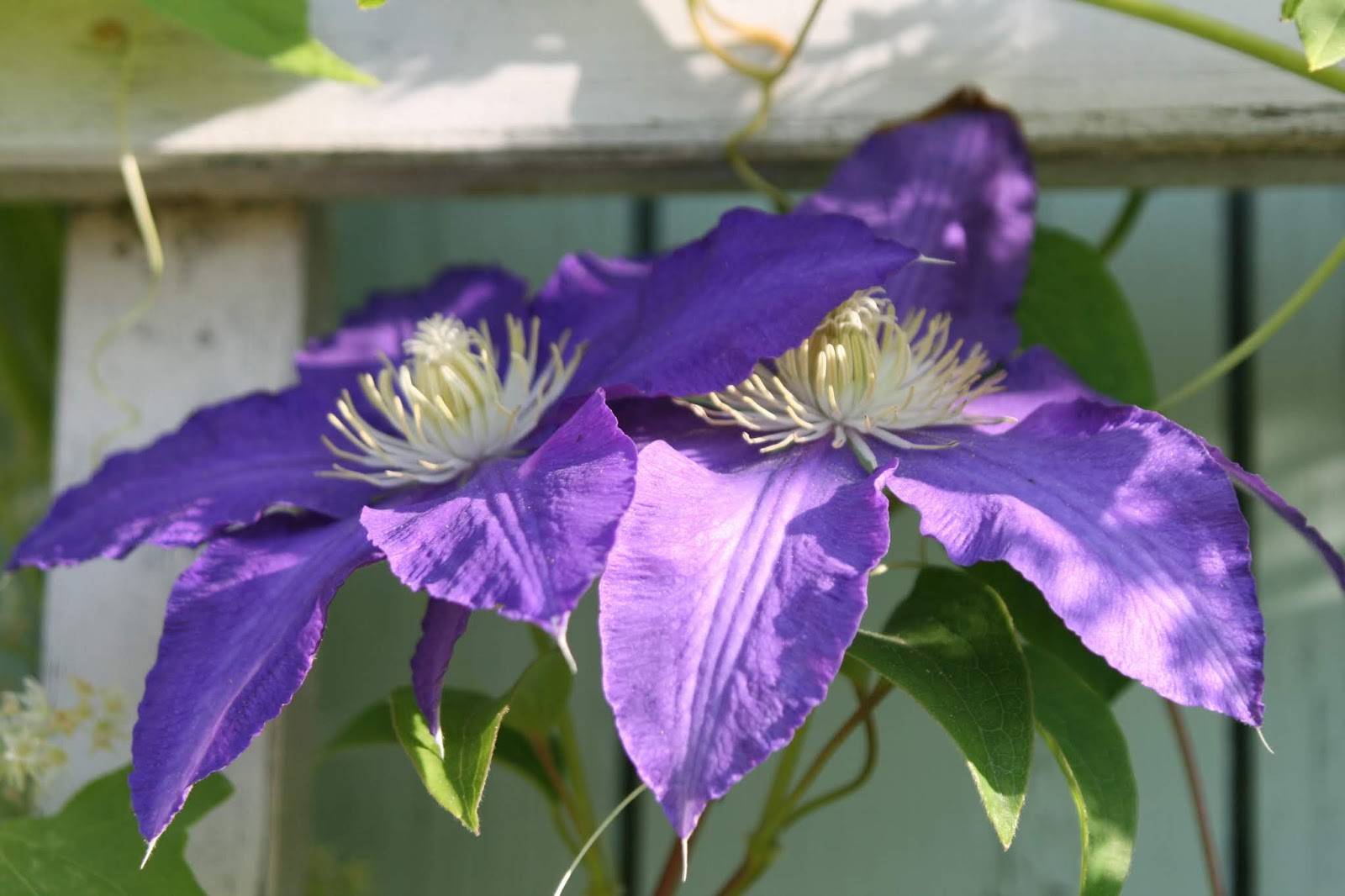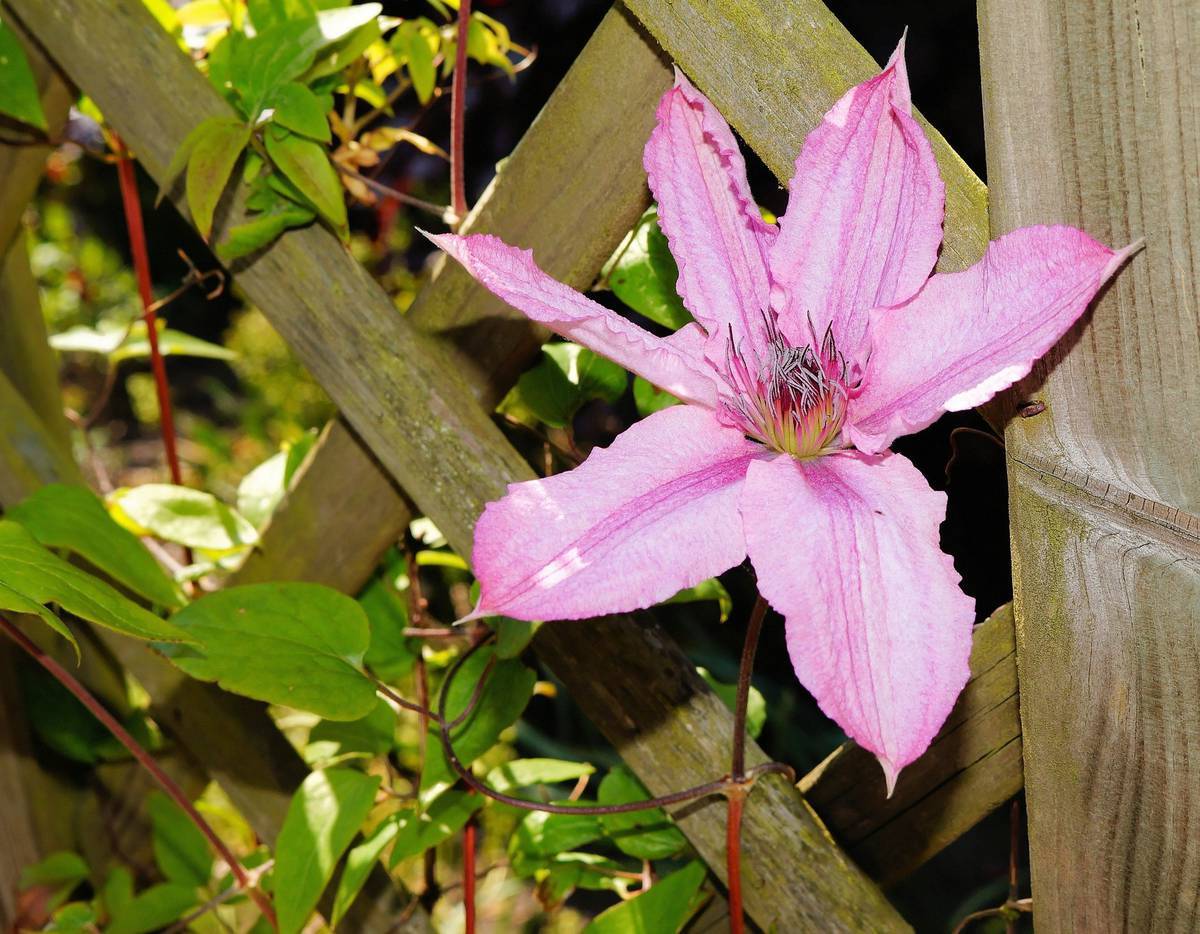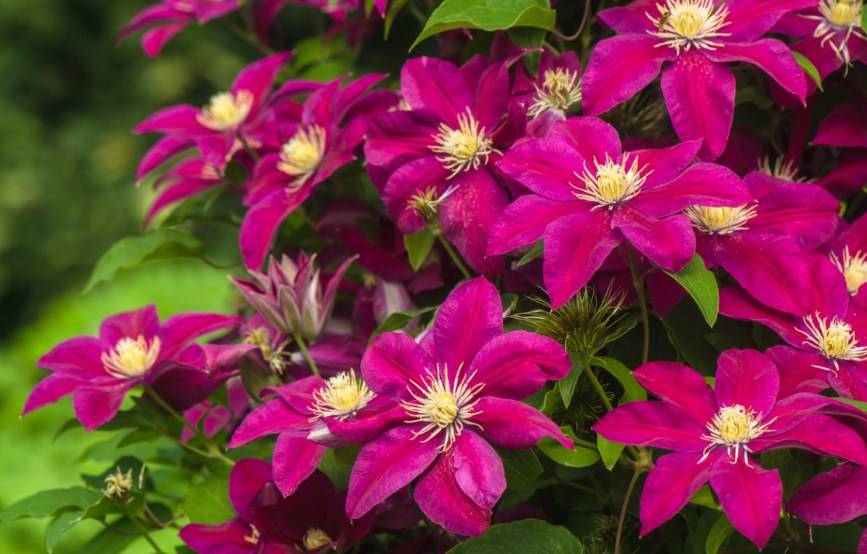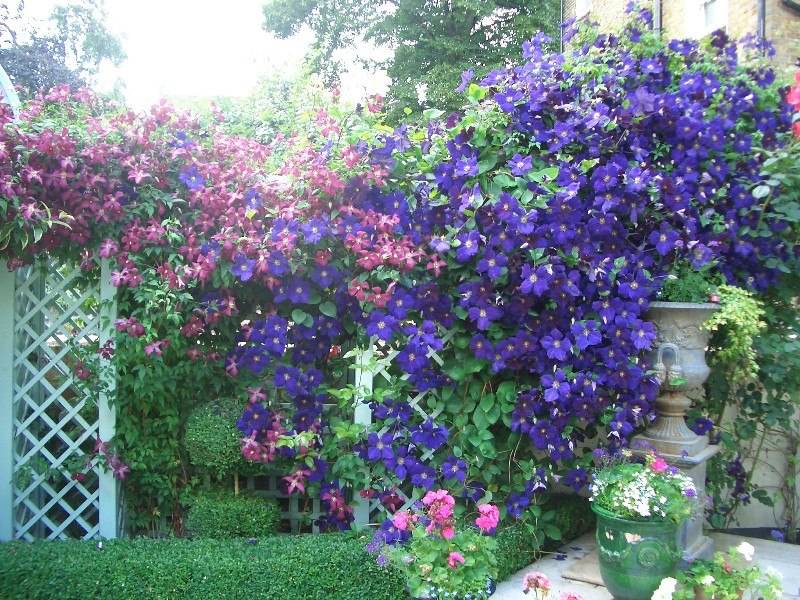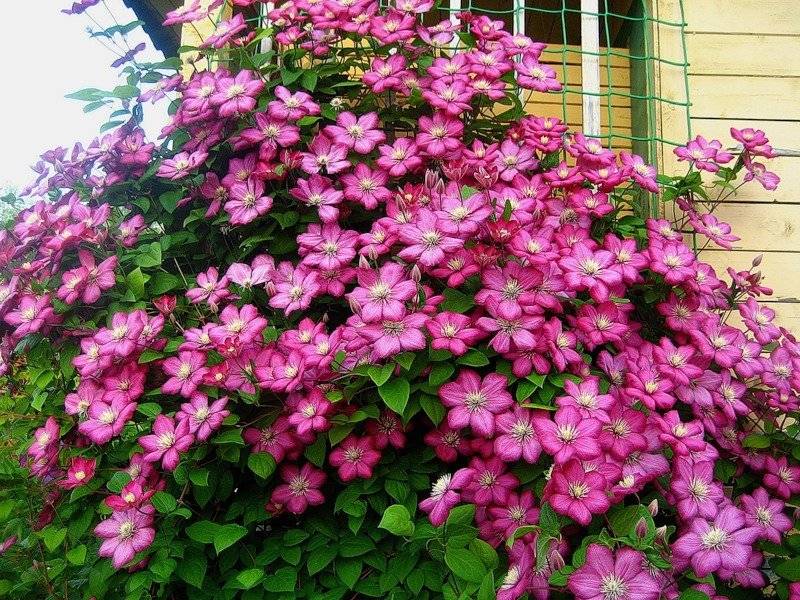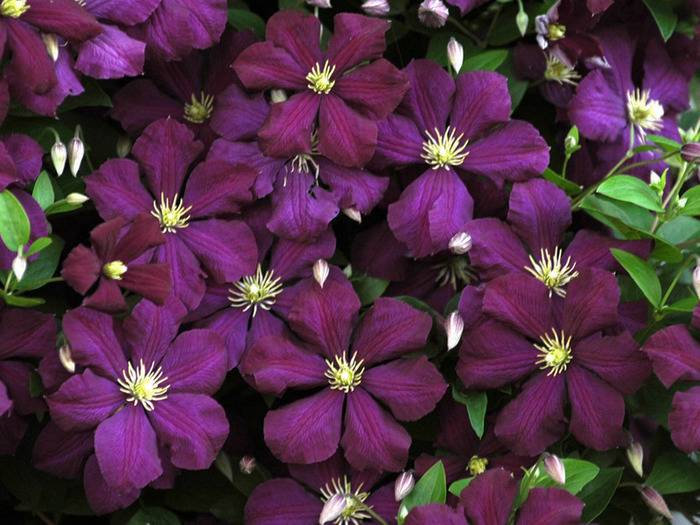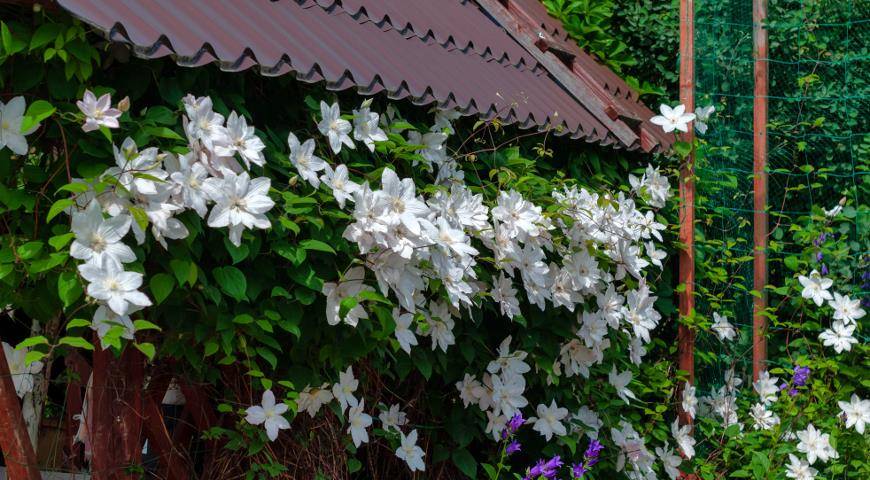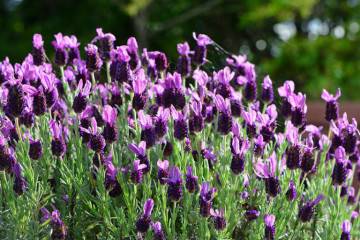Clematis - planting and care in the open field for beginners
Content:
- Clematis: Planting and Outdoor Care for Beginners
- When is it better to plant clematis
- Step-by-step instructions for planting clematis in spring
- Clematis: general rules for care and cultivation
- What clematis love for lush flowering: the tricks of experienced florists
- Diseases of clematis and their treatment
- Clematis: preparing for winter
- Clematis: features of planting and care in the Urals
- Clematis for the northwest: planting and care features
- Clematis: what you need to know about care and cultivation in the Middle Lane
Clematis create picturesque and colorful waterfalls on the site. Plants can grow up to two meters high when properly planted and cared for. They belong to the genus of the Buttercup family, in nature they are most often found in Asia, North America and Europe. For the most part, clematis are perennial herbaceous or shrub plants. How to plant clematis correctly is an important point, since mistakes made can be the reason why the plant does not revive in spring.
Clematis: Planting and Outdoor Care for Beginners
The cultivated varieties are considered capricious. Some of them do not tolerate the planting procedure very well. That is why you should pay due attention to how to plant clematis.
The plant in question is characterized by its specific preferences:
- it is not recommended to grow clematis in places where there is stagnant water;
- the plant must be protected from winds in winter and summer;
- loves clematis light and airy soil;
- a place is chosen where there is always plenty of sunshine.
You can grow a plant in the country near a wall or other type of support. Having chosen clematis, care and cultivation provide for the seedling to be located at a distance of at least one and a half meters from other plantings.
Requirements for planting material
When deciding how to plant clematis in the autumn, it should be borne in mind that vegetative buds should be developed at this time. In springtime, there should be at least one shoot. Other requirements:
- the seedling must have at least 3 roots, the length of which is from 10 cm;
- a weak plant should overwinter in a special room, since too low a temperature will cause the death of the bush;
- only healthy seedlings should be selected.
It is not recommended to use a tree as a support, as the crown will create a shadow.
How to save a seedling before planting
After the young shoots hatch, small shoots that are deformed are removed. The developed ones are left for a year and placed in a cold chamber. Such a measure allows you to preserve the plant until the moment of transplantation.
To preserve a plant that was bought in the fall, it is transplanted into a separate container. The temperature must be at least 5 ° C. In this case, rare watering is recommended.
Clematis roots
Instead of a container, you can use plastic wrap, which is wrapped around the root system, making small holes for air to enter. All leaves must be removed, and the roots must be treated with maxim fungicide.
At what temperature the seedling will be stored depends on the degree of its preservation.
When is it better to plant clematis
Having chosen clematis, planting and care in the open field for beginners creates certain difficulties, since the plant does not tolerate the transplant procedure well. A perennial plant with an open root system is recommended to be planted in April or early May, having previously prepared a seedling for your garden. In autumn, it is important not to be late with the dates, since the species in question has an early start of the growing season.
Features of planting clematis in the autumn season
In autumn, planting should be started between late August and early October. If everything is done correctly, the plant will root well before the onset of frost.
The soil at the time of frost can freeze severely, which negatively affects the condition of the vine. Therefore, preparation for the onset of frost involves soil insulation, which requires a layer of dry leaves. They cover the entire landing strip.
Features of planting clematis in spring
In spring, it is recommended to choose the period from early April to May, it all depends on what kind of weather has formed. Planting in the spring will not create problems, since such a vine has an early growing season.
In the Moscow region, it will grow rapidly and by the onset of the first frosts it will already get stronger.
Step-by-step instructions for planting clematis in spring
In order for the vine to take root quickly, you need to pay attention to the correct planting. The procedure consists of several basic steps. In the spring, the flower must be prepared accordingly.
Soil and planting rules
Having decided for yourself when to plant clematis, the second thing to consider is the right place to plant. For this perennial plant, the site must meet a number of requirements:
- a novice gardener should take into account that the plant loves sunlight, but direct rays can cause leaf burns. In hot weather, you will have to cover the flowers, so planting is recommended in partial shade;
- the most suitable place should be ventilated, but strong drafts also negatively affect clematis;
- liana will not be able to take root in the lowlands. This is due to the fact that a large amount of moisture causes root rot. Groundwater should not be located too close to the surface, so a higher place is chosen;
- it is recommended to check the pH value. Too acidic soil becomes the reason why clematis does not take root;
- the soil should be nutritious and loose, the loamy type is ideal;
- it is prohibited to land in close proximity to a metal fence or other similar structure. This is due to the fact that buildings in the summer will become a source of intense heat.
In most cases, many flower gardens meet the stated requirements.
Planting pit preparation
It is recommended to start preparing the soil 1-1.5 months before planting, as it should settle down a little. The preparation guidelines are as follows:
- all weeds and stones, debris are removed;
- with acidic soil, ash or dolomite flour is introduced into it, after which it is loosened;
- low-lying peat or sand is added to clay soil. Then you need to dig up the site.
After the site has been prepared, the following work is done:
- At the bottom, 15 cm of the drainage layer is laid out. For this, fine gravel is used.
- Low-lying peat and sod land are mixed in equal proportions.
If the seedling was in poor condition, then you need to add fertilizer - nitroammofosk and wood ash. After that, a bucket of water is poured into the pit and time is given so that everything can settle.
Planting technology for clematis
The landing pattern provides for compliance with the instructions, which consist of several points:
- If the seedling has an open root system, a mound is made in the center of the created hole.
- The roots must be distributed evenly over the mound. They should lie in a circle and not bend.
- The place where the root system goes into the trunk must be sprinkled with soil. It is recommended that the first pair of buds be under the ground. Similarly, they protect the plant from low temperatures.
- The earth is compacted, after which a deep groove is made along the radius.
- At the time of planting, the plant is watered abundantly. A small peg is driven in close by, after which the plant is tied to it.
Around the flower, the soil should be mulched with a layer of peat.
Clematis: general rules for care and cultivation
After planting, you need to know how to care for clematis. If you make even one mistake, there is a chance that the plant will disappear.
Clematis care in the first year
In the first year, pruning is recommended, which stimulates the growth of new strong shoots. You need to make timely watering. It is recommended to use at least 20 liters of water at a time per 1 bush.
How clematis grows
Growing a vine in the garden is quite simple. In the summer, watering is needed at least several times a week, since too high a temperature causes drying out. Loosening is recommended a day after watering.
The flower grows fairly quickly under good conditions. In the first year, it is not recommended to apply a large amount of fertilizer. At the time of intensive growth, nitrogen-containing fertilizers are added.
How to properly care for clematis
The peculiarities of watering are the intensity of this procedure. It is necessary to shed the soil by 40-50 cm. After the growing season, watering is carried out once a week. At one time, you need up to 10-20 liters.
It is recommended to apply fertilizer from 3 to 5 times. It is recommended to use diluted mullein or mineral fertilizer - 20 kg per bucket of water.
What clematis love for lush flowering: the tricks of experienced florists
For flowering, you need to regularly feed the bushes. It is recommended to carry out this procedure every 10 days in small portions. To obtain the required mixture, you need to mix bird droppings, 1 tbsp. a spoonful of ammonium nitrate, 5 kg of manure, 1 tbsp. a spoonful of vermicompost.
It is recommended to alternate mineral and organic fertilizers.
How to care for a crop after flowering
Leaving after flowering is uncomplicated. The main task is to protect the weakened plant from strong winds.
Abundant watering is required during this period. It makes the plant more resistant to environmental influences.
Diseases of clematis and their treatment
There are several different diseases that can affect the plant in question:
- rust;
- gray rot;
- powdery mildew;
- wilt, or wilting;
For every ailment, there is a required medicine on sale. In this case, treatment often involves the removal of damaged elements.
Clematis may not bloom due to pests or insufficient moisture. If flowers do not appear with the onset of the deadline, then you need to pay attention to the condition of the plant.
Clematis: preparing for winter
Wintering a plant involves pruning. Depending on the landing site, the procedure takes place in late October or early November. The first pruning should be carried out so that a shoot with a height of 20-30 cm remains. In this way, the likelihood of the appearance of side shoots can be excluded.
When building a shelter, you need to make sure that clematis does not flood with water at the time of the thaw. For shelter, a special material is used that allows air to pass through, but retains water and retains heat. Lutrasil works best.
Clematis: features of planting and care in the Urals
Landing is carried out according to the standard scheme. The recommended period is April-May. You need to have time to plant the plant before the buds swell. Landing is carried out in a hole 60 by 60 cm. Drainage must be placed at its bottom.
The plant is moisture-loving, so you need to provide abundant watering. An adult bush requires about 20-40 liters of water.
The soil should be periodically loosened. This procedure is usually done about once a week. In the course of loosening, weeds are removed.
Clematis for the northwest: planting and care features
For planting, you need to choose the right planting material. The roots of the seedling should not have spots, rot or other defects. It is recommended that there are about 3-4 kidneys.
You need to plant in a hole 60-70 cm deep. The diameter can be about 60 cm. The formed hole is covered with dolomite flour or lime, then a seedling is placed in it and its roots are sprinkled with earth.
As in other cases, in this region, care involves abundant watering. One bush will require about two buckets of water. Top dressing is carried out from the second year.
Clematis: what you need to know about care and cultivation in the Middle Lane
In the middle lane, there are no significant difficulties with growing or caring for a plant.
Step-by-step landing instructions:
- The soil is being prepared.
- A hole is dug 60 by 60 cm.
- Drainage is poured at the bottom.
- The seedling is placed in the center of the hole and sprinkled with sand.
- Abundant watering is carried out.
Fertilization starts in the second year. Growing involves pruning in time, as well as covering the plant to protect it from the effects of low temperatures in winter.
Despite the fact that clematis is considered a whimsical plant, there are no big problems with planting and growing. Even a novice gardener will be able to cope with the task at hand.
